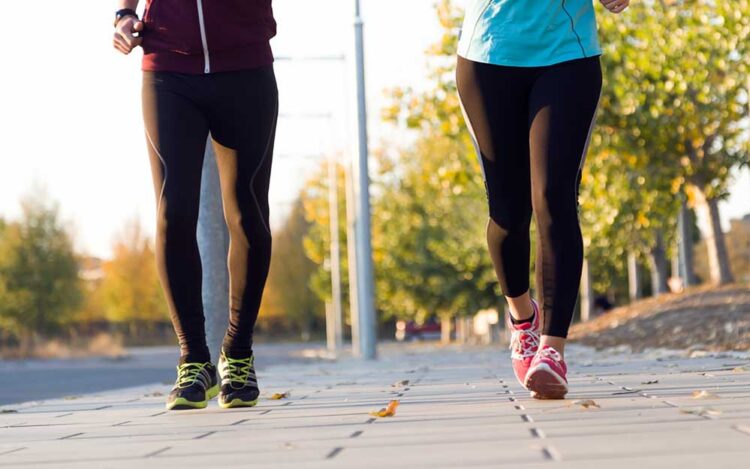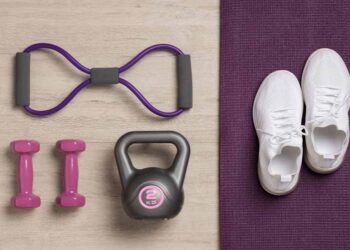Have you ever laced up your sneakers, thinking about the daunting task of going for a run, only to settle for a brisk walk instead? If so, you might have discovered the hidden gem of brisk walking benefits without even realizing it. This article sheds light on how the myriad brisk walking benefits could make it your preferred choice over running, offering a comprehensive look into its transformative power for both physical and mental health.
Moderate-impact cardio, such as brisk walking, is not just a stepping stone for more rigorous exercises; it’s a cornerstone for a healthy lifestyle. Recognized as a “moderate-intensity aerobic activity”, brisk walking can play a pivotal role in improving cardiovascular fitness, lowering blood pressure, and enhancing mental well-being. In a world where the buzz around high-impact workouts often takes center stage, the gentle, yet effective nature of brisk walking benefits tends to be overlooked. Yet, this accessible and flexible form of exercise could be the key to transforming your life, both physically and mentally.
Brisk walking benefits strike a perfect balance, offering a range of health benefits without the high risk of injcanury associated with running. From enhancing cardiovascular health to reducing the risk of chronic diseases such as diabetes, heart disease, and certain cancers, the advantages of incorporating brisk walking into your routine are vast and varied. Whether you’re a fitness enthusiast looking to diversify your workout regimen or someone just starting your health and wellness journey, brisk walking benefits offer a path to achieving your goals.
In this article, we’ll explore the top 10 surprising brisk walking benefits and delve into the question: Is it better than running? Through scientific evidence, expert insights, and practical advice, we aim to provide you with a comprehensive understanding of how brisk walking can be not just a beneficial, but a superior addition to your fitness arsenal.
01
of 03
The Basics of Brisk Walking Benefits
Brisk walking serves as an excellent example of moderate-intensity aerobic activity that’s accessible and impactful. Understanding the brisk walking benefits begins with recognizing it as a simple yet effective form of cardio that enhances your fitness without the high-impact stress of running. This section explores what makes brisk walking an ideal exercise for everyone, regardless of their fitness level.
What Is Brisk Walking?
Brisk walking is defined not just by the pace at which you walk but by the intensity with which your body responds to this activity. Typically, brisk walking is characterized by a speed of about 3 to 4.5 mph (4.8 to 7.2 km/h), pushing your heart rate into a moderate-intensity exercise zone. This pace is vigorous enough to increase your heart and breathing rates while allowing you to maintain a conversation.
Moderate-Impact Cardio: The Sweet Spot
Moderate-impact cardio, like brisk walking, occupies the sweet spot between low-intensity and high-intensity workouts. It’s vigorous enough to yield significant health benefits but gentle enough to minimize the risk of injury or overexertion, making it accessible to a broad audience. This balance is crucial for those who are new to exercise, recovering from injury, or looking for sustainable ways to stay active.
The Accessibility of Brisk Walking
One of the greatest benefits of brisk walking is its unparalleled accessibility. Unlike running, which often requires a certain level of fitness to start, brisk walking can be taken up by almost anyone, anywhere. There’s no need for specialized equipment or gym memberships; all you need is a pair of comfortable walking shoes and the willingness to step out the door.

- Arch Support: Match your foot type with shoes that offer proper arch support. Consider your foot type (flat, neutral, or high arch) when selecting a shoe.
- Breathable Materials: Select shoes made from materials like mesh to keep feet cool.
- Cushioning: Look for midsole cushioning to reduce impact on joints.
- Flexibility: Ensure the shoe flexes at the forefoot for a natural stride.
- Fit: Aim for a thumb’s width of space in front of your toes and try walking in the shoes before buying, ideally later in the day.
02
of 03
Surprising Brisk Walking Benefits
Now that we’ve covered what brisk walking is and why it’s an excellent form of moderate-impact cardio, let’s dive into the heart of the matter—the myriad benefits it offers. Brisk walking is not just beneficial; it’s transformative. Here are ten surprising benefits that might just make you lace up your sneakers more often.
1. Enhances Cardiovascular Health
Delving into brisk walking benefits, its impact on heart health is profound. Brisk walking can significantly reduce the risk of heart disease, showcasing its capacity to improve our cardiovascular system efficiently.
2. Promotes Weight Management
A key brisk walking benefit is its role in weight control. Regular brisk walking can help maintain a healthy weight, emphasizing the activity’s effectiveness in burning calories steadily.
3. Improves Mental Health
Among the brisk walking benefits, its positive influence on mental well-being is notable. Brisk walking serves as a stress reducer and mood enhancer, proving that its advantages extend far beyond the physical.
4. Strengthens Muscles and Bones
This moderate exercise strengthens the leg muscles and increases bone density, reducing the risk of osteoporosis. Brisk walking, unlike running, applies gentle pressure on bones, which helps in promoting bone health without excessive wear and tear.
5. Enhances Lung Capacity
Exploring brisk walking benefits further, its ability to improve respiratory health is another key advantage, promoting better oxygen flow throughout the body.
6. Regulates Blood Sugar Levels
Walking after meals is known to help in lowering blood sugar levels, making brisk walking an excellent activity for managing diabetes. This benefit comes with minimal risk compared to more intense forms of exercise that can cause sugar levels to fluctuate more dramatically.
7. Improves Digestion
A regular walking routine can help enhance your digestive system’s functioning. The movement helps in speeding up the digestion process, which can alleviate issues like constipation and help maintain a healthy digestive tract.
8. Boosts Immune Function
Studies have shown that regular walkers have fewer sick days and lower incidences of catching common illnesses. This is attributed to the immune system’s enhanced functioning due to consistent moderate exercise like brisk walking.
9. Increases Lifespan
Perhaps one of the most compelling benefits, brisk walking has been linked to increased longevity. Regular walkers tend to have a lower risk of developing chronic diseases, contributing to a longer, healthier life.
10. Fosters Social Connections
Brisk walking can be a social activity. Walking with friends or joining a walking group can provide social support and motivation, making it easier to stick with your walking routine while enhancing your social life.
03
of 03
Addressing Common Concerns and Misconceptions
Here, we debunk common myths surrounding brisk walking, reinforcing the idea that the brisk walking benefits are too significant to overlook. This reassurance encourages readers to embrace brisk walking as a viable and effective exercise option.
Is Brisk Walking Really Effective for Fitness?
Yes, Absolutely! Brisk walking is a highly effective form of cardio exercise that improves cardiovascular health, aids in weight management, and boosts mental wellness. Its effectiveness lies in its sustainability and the lower risk of injury, making it a practical choice for consistent daily activity.
Can Brisk Walking Be My Only Form of Exercise?
Definitely. For many people, brisk walking can serve as a comprehensive form of exercise, especially when combined with a balanced diet and healthy lifestyle choices. It targets a wide range of physical and mental health aspects, making it a standalone workout option for those seeking a moderate level of activity.
Will I Burn Enough Calories?
Yes. While brisk walking may burn fewer calories minute-per-minute compared to running, its lower impact and accessibility mean that you’re more likely to stick with it long term, leading to significant calorie burn over time. Plus, it’s easier to fit into your daily routine, increasing overall activity levels.
Is It Too Easy to Be Beneficial?
Not at All. Brisk walking strikes an ideal balance between being manageable and offering substantial health benefits. Its “moderate intensity” is key to its effectiveness, as it allows for longer duration and consistency, which are critical for health improvements and weight management.
Do I Need Special Equipment?
No Special Equipment Required. Aside from a pair of good walking shoes, brisk walking doesn’t require any special equipment. This simplicity makes it an accessible and easy-to-start exercise option for everyone.

- City Parks: Explore the green spaces and trails in your local city park, perfect for both serene walks and observing urban wildlife.
- Botanical Gardens: Botanical gardens offer paved paths among beautifully curated plants and flowers, ideal for a peaceful walk.
- Historical Sites: Walking through areas with historical landmarks can add an educational twist to your routine.
- Waterfronts: Whether it’s a beach, river, or lake, walking alongside water provides scenic views and a refreshing breeze.
- Mountain and Forest Trails: For a more adventurous walk, explore the trails in nearby mountains or forests, where you can enjoy nature’s tranquility and challenging terrains.
Reflecting on the brisk walking benefits outlined throughout the article, it’s clear that this activity is not only a powerful form of exercise but also an accessible path to a healthier, more fulfilled life. Embracing brisk walking can lead to profound improvements in both physical health and mental well-being, proving that sometimes, the best step forward is a brisk one.
Walking is not just about moving from one place to another; it’s about discovering the joy of movement, the beauty of your surroundings, and the benefits of taking it one step at a time. So, tie up those laces, step out the door, and start on the path to a healthier, happier you with brisk walking.











